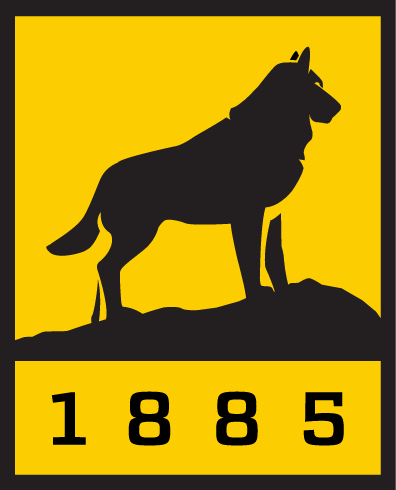News
Paul is excited to continue his research on ISRU, planetary mining and construction. He is looking forward to continuing to work with his research team and writing lots of proposals.
In a milestone in space construction technology, Michigan Tech's Planetary Surface Technology Development Lab (PSTDL) partnered with SpaceFactory to successfully build and test the first lunar road in a simulated space environment, replicating the dusty vacuum conditions of the moon.
NASA selected Spacefactory, who partenered with the Michigan Technological Unversity's PSTDL to receive 2023 STTR Phase II awards alongside only 20 other teams small businesses and their intsitution partners. Their proposed innovation is a low energy, ISRU based system for enhancing bulk regolith to construct a wide array of sustainable and resilient lunar infrastructures.
Michigan Technological University’s Planetary Surface Technology Development Lab tests the excavation tools of a robot on a concrete slab, held by a gravity-offloading crane.
Michigan Technological University earned an invitation to the TVAC facilities for performing exceptionally well in the excavation portion of the final competition
The technical contribution award is “given to an individual who has contributed substantially to advancing the state of the art in aerospace engineering, sciences and technology, and space exploration and construction with application to civil engineering.”
Dr van Susante was awared a Outstanding Technical Contribution Award by the American Society of Civil Engineers (ASCE)
Dr van Susante gave a webinar as part of the AIAA Space Resources Technical Committee's Space Resources Webinar Series. Watch the recording here
PSTDL was highlighted by Michigan Tech's Research Magazine
PSTDL is named one of six teams to advance to the final stage of NASA's Break the Ice Challenge
PTSDL is among 4 groups that have been selected to move to the final stage of NASA's Watts on the Moon challenge.
Dr. Paul van Susante appeared on the Cold Star Project.
The PSTDL 'RedWater: Water Mining System for Mars' Article Featured in the New Space Journal of Space Entrepreneurship and Innovation.
The PSTDL Watts on the Moon Challenge is Featured in the New Space Journal of Space Entrepreneurship and Innovation.
The Planetary Surface Technology Development Lab is working with the Colorado School of Mines and others (Lunar Outpost, Bechtel Corporation) to develop an autonomous vehicle for lunar landing pad site preparation as part of the newly announced NASA LuSTR 2021 grant. The PSTDL will develop a vibratory compaction device for the CSM-led program.
Elijah Cobb graduated with his Bachelor's of Science in Computer Science and decided to stay at the PSTDL during his Ph.D.
Michigan Tech creates video touring the PSTDL.
Team LIQUID including the PSTDL receives an award of $25,000 as a runner-up.
The PSTDL submitted a proposal to the NASA Break the Ice centennial challenge with the Lunar Ice QUest Innovative Design (LIQUID) rover design.
The PSTDL won the $100,000 grand prize for their proposed system of tethered rovers that unspool superconducting wire into the crater for delivering power from a power plant to a water extraction plant inside a crater.
Dr. Paul van Susante presents the PSTDL's T-REX rover that won the NASA BIG Idea 2020 Competition at the Lunar Surface Innovation Consortium 2021 conference.
Jason Noe has joined the PSTDL to work on a PhD in Mechanical Engineering under the direction of Dr. Paul van Susante.
Travis Wavrunek has joined the PSTDL to work on a PhD in Mechanical Engineering under the direction of Dr. Paul van Susante.
The PSTDL at Michigan Technological University is one of six U.S. universities which have been selected by NASA for the LuSTR solicitation. The goal of LuSTR is to develop lunar-focused research, to bring about advancements in in-situ resource utilization and sustainable power solutions. The PSTDL will develop a percussive cone penetrometer to determine mechanical characteristics of lunar soil, and to prospect for water-ice and volatiles.
The T-REX team received the Artemis Award from Director of NASA, Jim Bridenstine. The team won the Artemis award for presenting at the NASA BIG Idea 2020 conference.
The T-REX team presented at the BIG IDEA 2020 conference. Following their presentation, the T-REX team had a Q&A with NASA scientists and the public.
In this episode with special guest Paul van Susante, Assistant Professor at Michigan Tech University, we discussed many of the challenges that are unique to Mars for ISRU. Challenges such as...
Dr. Paul van Susante comes with the heritage of the Colorado School of Mines, but is a professor at Michigan Technological University. He is well-known in the Lunar and Mars construction & ISRU field, contributing to CLASS and as co-Investigator on several experiments...
The PSTDL was awarded a grand to develop a small rover to lay lightweight, superconducting cable that tethers to a lander as it traverses craters in permanently shadowed regions. Once in its final destination, the rover acts as a recharging hub and communication relay for other robots working in the area, providing continuous power without requiring direct sunlight.
Michigan Tech researchers have been awarded a NASA grant to study ways to extract water from gypsum rock on Mars, bringing a human trip to the red planet closer to reality.
